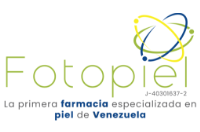SEGUNDA PARTE FACTOR CITOTOXICO EN LA LECYTHIS OLLARIA ("COCO DE MONO")
Palabras clave:
FACTOR CITOTOXICO, LECYTHIS OLLARIA, COCO DE MONO,Resumen
Extracts of nuts of "coco de mono" (Lecythis ollaria) were tested for cytotoxic
activity, in view of the hair-loss produced by its ingestion in several cases reported in the
medical literature in Venezuela. Mammalian cells growing in vitro were used as the test
system, adding a purified crystalline material from extracts of coco de mono, identified as
seleno-cystathionine (cystaselenonine), or L-2-amino-4-(L-2-amino-2-car-
boxyethly) selenylbutyric acid. Biological activity of this material was exactly equivalent to
the aqueous extract used previously, in that the concentration necesary for 50yc inhibition
of growth was also 3-5 micrograms per ml.
The present studies would seem to indicate that the cytotoxic factor in water
extracts of these nuts is entirely due to cystaselenonine. The toxic effects of both crude
extracts of nuts as well as highly purified samples of crystalline seleno-cystathionine are
equally reversed by the addition of 1-cystine to the culture medium. Moreover, apparently
all of the biological activity in crude water extracts of the nuts seems to be able to be
quantitatively accounted for by the amino acid seleno-cystathionine.
Regarding the mechanism of action of seleno-cystathionine, it seems likely that the
material interferes with the utilization of the sulfurcontaining amino acid 1-cysteine for
protein synthesis. In our cells growing in vitro, this restriction in the amount of utilizable
cysteine means that cell growth comes to a halt. However, the hair loss observed after
ingestion of nuts of coco de mono is probably not due to a cytotoxic effect of selenocystathionine
on the hair follicle cell, so much as to an interference in the utilization of
cysteine by the hair folicle cell in the formation of hair. It is well known, of course, that
cysteine is present in high concentration in hair, and is of vital importance for the
keratinization process.
Descargas
Número
Sección
Licencia
Publicado por la Sociedad Venezolana de Dermatología Médica, Quirúrgica y Estética







